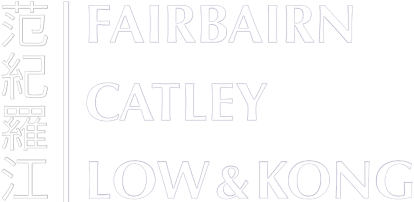缔约各方在同一地点参与实体会议,以达成商业交易及签订交易文件,曾经是一种通行的做法,除非交易涉及多名位于不同区域的缔约方导致进行实体会议不可行。然而,新冠疫情的后续影响和全球化改变了这种常态;个人和公司越来越依赖科技进行商业交易,以及签订交易文件。在此背景下,本行经常收到客户有关电子签署在香港的法律效力和要求的法律查询。
本文将探讨电子签署和数码签署在香港的法律效力。本文亦会探讨接受电子签署的文件和合约,以及其应用的例外情况。
《电子交易条例》(香港法例第553章)
《电子交易条例》(香港法例第553章)是规管电子签署的主要条例。除某些例外情况外(请见下文‘电子签署及数码签署应用的例外情况’部分),倘某些要求得以满足,电子签署及数码签署与文件上手写签署均具有同等法律效力。
电子签署与数码签署
(一) 电子签署
根据《电子交易条例》第2条的规定,电子签署是指与电子纪录相连的或在逻辑上相联的数码形式的任何字母、字样、数目字或其他符号,而该等字母、字样、数目字或其他符号是为认证或承认该纪录的目的而签立或采用的。
《电子交易条例》并无明文规定电子签署需采用某一种形式或格式。以下是应用电子签署的一些常见例子:
- 在电子邮件底部的签名行上输入姓名;
- 在合约上手写签署,然后把该合约扫描并储存为PDF文件,再通过电子邮件将该PDF文件发送给合约的另一方;
- 在电子签名板上签署以批准信用卡交易;
- 通过电子签署提供商(例如:Docusign和Adobesign)产生的签署;及
- 传真文件上的签署。
倘若任何合约方不涉及政府单位或代表某政府单位行事,在遵守《电子交易条例》的规定的前提下,则电子签署为有效及可执行。这些要求如下所示:
- 签署方使用某方法使该电子签署与某电子纪录相连或在逻辑上相联,以识别和显示认证或承认包含于以该电子纪录形式存在的该文件内的资讯;
- 就传达包含于该文件内的资讯的目的而言,所使用的该方法是可靠和适当的;及
- 获得提供签署的一方同意签署方使用该方法。
(二) 数码签署
根据《电子交易条例》第2条,数码签署指签署人的电子签署,而就其电子纪录而言,该签署是用非对称密码系统及杂凑函数将该电子纪录作数据变换而产生的,使持有原本未经数据变换的电子纪录及签署人的公开密码匙的人能据之确定 (i) 该数据变换是否用与签署人的公开密码匙对应的私人密码匙产生的;及 (ii) 在产生数据变换之后,该原本的电子纪录是否未经变更。
倘若合约的任何缔约方为政府单位或代表政府单位行事,除电子签署外,其他种类的签署(包括手写签署及数码签署)均满足任何有关签署的法律要求。为免生疑问,非政府单位可使用电子签署或数码签署进行交易。
根据《电子交易条例》第6(1A)条,数码签署必须是:
- 由认可认证机构颁发的认可证书证明的数码签署[1];
- 在该证书的有效期内产生的;及
- 按照该证书的条款使用。
接受电子签署或数码签署的文件和合约
电子签署或数码签署可用于大多数文件和合约。以下是一些例子:
(一) 简单合约
一份简单合约可以使用电子签署方式签名,前提是该份合约没有规定与签署形式有关的限制或要求,且该合约不属于排除文件(定义见下文)清单内。
(二) 董事会会议纪录及董事会书面决议
受限于公司章程细则,使用电子签署方式签名的董事会会议纪录及书面决议一般均会被接受。值得注意的是,《公司条例》(香港法例第622章)第655(2)条订明,公司纪录可采用电子形式备存。
(三) 股东书面决议
与董事会书面决议相反,《公司条例》第560条明确规定,如果公司在任何载有或随附被提出的书面决议的文件中,提供一个电子地址,须视为已同意任何关乎该决议的文件或资料,均可以电子方式送交该地址 (受制于该文件指明的条件或限制)。
电子签署及数码签署应用的例外情况
尽管电子签署和数码签署对于上述大多数合约和文件均有效,但是某些文件必须以手写签署而非电子方式签订。这些排除文件(「排除文件」)载列于《电子交易条例》的附表1中,其中包括但不限于以下文件:
- 遗嘱、遗嘱更改附件或任何其他遗嘱性质的文书;
- 授权书;
- 誓言及誓章;
- 法定声明;
- 信托(归复信托、默示信托及法律构定信托除外);
- 政府的批地协议及条件及政府租契;
- 《土地注册条例》( 香港法例第 128 章 ) 第 2A 条提述的达成浮动押记的文件;
- 《土地注册条例》提述的会影响香港的任何一幅地、物业单位或处所的契据、转易契、其他书面形式的文件或文书、判决及待决案件;
- 订立、签立或订立及签立根据《印花税条例》(香港法例第117章)须加盖印花或加以签注的文书,该条例第5A条所指的协议所关乎的成交单据除外;
- 《物业转易及财产条例》(香港法例第219章)所指的任何转让、转让契、按揭或法定押记,任何其他关乎不动产或不动产权益的处置的合约,或任何其他达成该等处置的合约;
- 可流转票据(但不包括注有“not negotiable”字样的支票)。
总结
在遵守所有适用法律的前提下,使用电子签署可以显著地简化商业交易。尽管非政府单位可以弹性地选择采用电子签署和数码签署方式签订合约和文件,但是政府单位不能采用电子签署签订合约和文件,而需用数码签署或手写签署等其他形式签署。最重要的是,在使用电子方式签署文件之前应确保拟签订的文件或合约并非属于排除文件。
如对本文有任何疑问,请联络本行的团队。我们非常乐意向您提供协助。
[1] 截至本文发表之日,香港有两间认可核证机关:(1) 香港邮政核证机关;及 (2) 电子核证服务有限公司。


